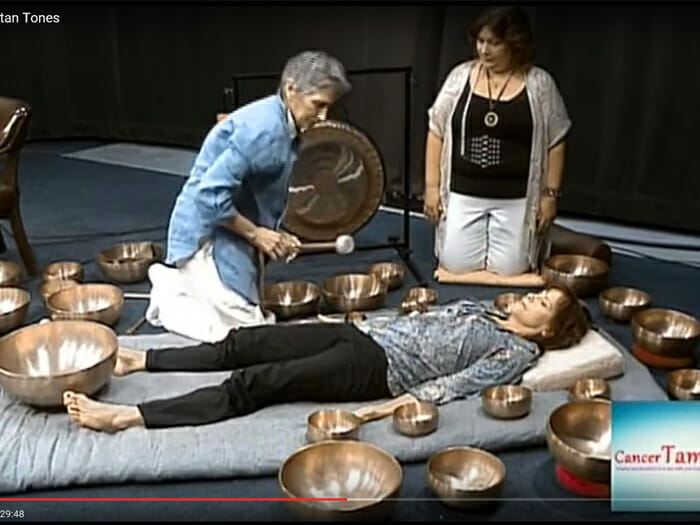Recent research and technological breakthroughs provide the medical profession with a new tool in evaluating and assessing the Parkinsonian population, as well as facilitating early diagnosis, according to Dr. Arthur Nelson, who recently published his findings after conducting a five-year research study with the Physical Therapy Program at The City University of New York’s College of Staten Island.
Dr. Nelson’s findings were based on results acquired while using his previously developed GaitRite system, which is a sophisticated data acquisition model that integrates specific components of walking (gait) to generate a Functional Ambulation Performance (FAP) score.
Dr. Nelson points out the graphical user interface displaying a persons footfallsThe system operates on the principle that a condition that affects the central nervous system will have latent manifestations in a person’s gait, such as a shorter than usual step length that takes longer to complete as seen in persons with Parkinson’s disease, or an asymmetrical footfall pattern as seen in persons who suffered a stroke with paralysis.
“Our research has demonstrated the reliability and level of evaluation that this dramatic new tool provides to clinicians,” said Dr. Nelson, “and is a major addition to the functional toolset that will improve the accuracy with which disorders are diagnosed and confirmed.”
GaitRite mat in useThe GaitRite system uses a series of switches on a grid pattern embedded into a mat that a patient walks on. The mat captures the footprints electronically, much like footprints in sand along the beach. The mathematical modeling outputs a standardized and objective FAP score after evaluating the person’s walking motion.
Once a FAP score is generated, a clinician is able to accurately determine a patient’s ambulatory mobility, that is, how well they walk. This assessment may alert the clinician to a possible diagnosis of Parkinson’s, or confirm a preliminary diagnosis.
For patients with a confirmed case of Parkinson’s or another neurological deficiency such as Downs Syndrome, the GaitRite system will accurately determine the effectiveness of the drug or physical therapy program that the patient may be undergoing.
Screenshot of GaitRite software interface“The GaitRite system accurately assesses gait abnormalities which may not be apparent to physical therapists, but which the GaitRite system will detect and alert us to,” said Dr. Nelson, “and being aware of this condition, which may have been the cause for serious harm, allows us to tailor a therapy program that will address that abnormality while greatly enhancing the patient’s quality of life.”
The GaitRite system is currently being used by over 150 rehabilitation centers throughout the United States and in many countries in Europe and the Middle East and Asia with dramatic results.
Currently, Dr. Nelson is conducting a study with researchers in Holland using a treadmill that provides feedback of footfalls. This treadmill places patients into a safety jacket suspended from a frame which eliminates the risk of falling, and allows a unique approach to the physical therapy training of patients with strokes, traumatic brain injury, spinal cord injury, Multiple Sclerosis, Parkinsonism, and joint replacements.
As well, this approach involves testing of motor power, coordination of muscle pairs, balance testing, and training. Dr. Nelson acted as consultant to Biodex Medical Systems in the developmental stages of this innovative treadmill. The results of this new venture are not determined yet, but Dr. Nelson says the early feedback appears very promising, and will greatly enhance a patient’s confidence and ability during physical therapy, which will result in an improved and sustained recovery.
EDITOR’S NOTE: For more information, or to schedule an interview, contact Ken Bach, 718-982-2328. Color photography available.
















